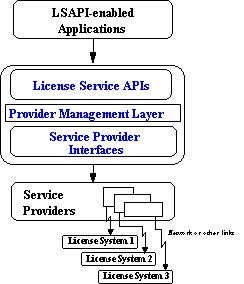


Source code may be license system independent? | YES |
Executable may be license system independent? | YES |
Dynamic Linking native to operating system? | YES |
Reentrant Operations | As permitted by service provider (reentrant operation may block) |
Source code may be license system independent? | YES |
Executable may be license system independent? | YES |
Dynamic Linking native to operating system? | NO |
Reentrant Operations | NO |
Source code may be license system independent? | YES |
Executable may be license system independent? | YES |
Dynamic Linking native to operating system? | NO |
Reentrant Operations | as permitted by the service provider |
Source code may be license system independent? | YES |
Executable may be license system independent? | YES |
Dynamic Linking native to operating system? | YES |
Reentrant Operations |
Source code may be license system independent? | YES |
Executable may be license system independent? | |
Dynamic Linking native to operating system? | |
Reentrant Operations |
Source code may be license system independent? | YES |
Executable may be license system independent? | |
Dynamic Linking native to operating system? |
Source code may be license system independent? | YES |
Executable may be license system independent? | |
Dynamic Linking native to operating system? | |